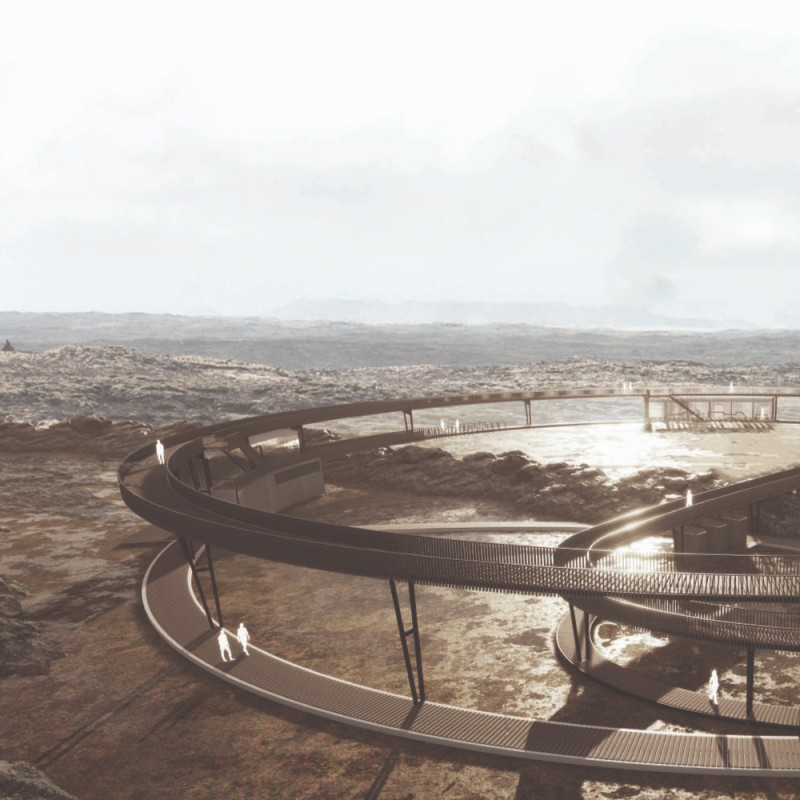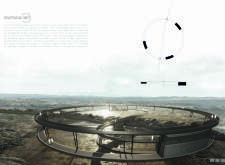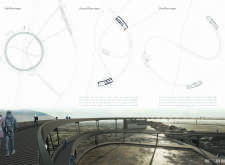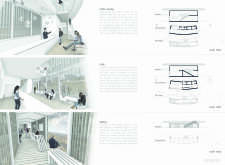5 key facts about this project
Grjótagjá 360° is located in the Myvatn region of Iceland, where it interacts with unique geological features. The design focuses on the Grjótagjá caves, creating a space that encourages visitors to explore the area's tectonic division. By incorporating a circular pathway system, it allows for easy movement both above ground and below, fostering a deeper connection to the landscape.
Visitor Center
The visitor center serves as the main entrance for guests arriving at the site. Positioned for convenient access from the car park, it includes important facilities such as an information counter and restrooms. This layout directs visitors toward the cave entrances, particularly Karlagjá, streamlining their experience as they prepare to engage with the geological beauty of the area.
Café
To the south, a café provides an additional point of interest and refreshment. It is accessible via clear pathways leading from the visitor center, making it easy to find. The café accommodates visitors on both the ground floor and an upper level, offering a pleasant place to enjoy food and drink. Its design faces Hverfjall volcano, allowing guests to take in views of the stunning landscape while they relax.
Gallery
The elevated second-floor gallery is located on the North American side, presenting a different vantage point for visitors. This space highlights the tectonic features of the land while providing scenic views. Partially enclosed with wooden battens, the gallery creates a balance between indoor comfort and outdoor atmosphere, reinforcing the relationship between the structure and its natural surroundings.
Design Nuances
Thoughtful planning is evident in the design, especially in how paths are positioned and elevation changes are considered. The overall layout allows for a comprehensive understanding of the tectonic fault, making the visitor experience engaging and informative. By fostering natural movement through various levels and spaces, it invites guests to explore and reflect on the intricacies of the landscape.
Details in the design underscore the connection between the built environment and the geological context. Sightlines and alignments prompt visitors to contemplate the natural beauty around them, encouraging a meaningful experience as they navigate this unique setting.






















































